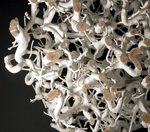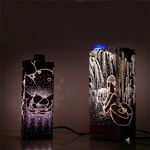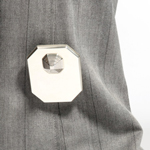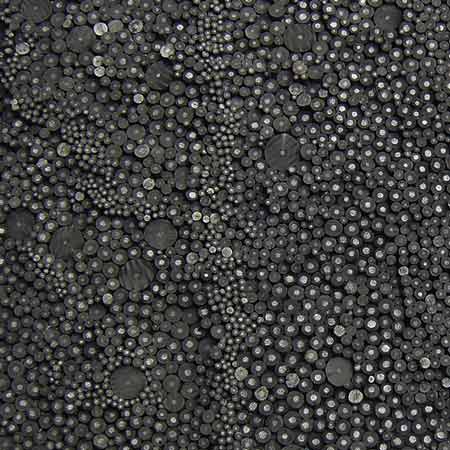
Table with a View by Anke Weiss
A table covered with charcoal by Dutch designer Anke Weiss is on show at Eat Drink Design as part of Dutch Design Week in Eindhoven, the Netherlands.
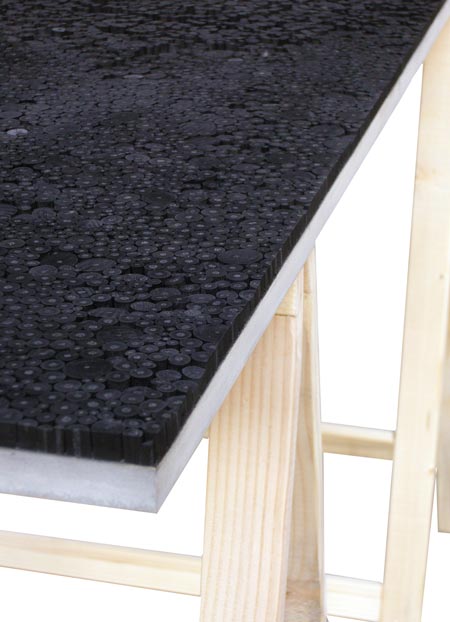
Weiss covered the MDF table top with fixative-treated charcoal sticks by hand.
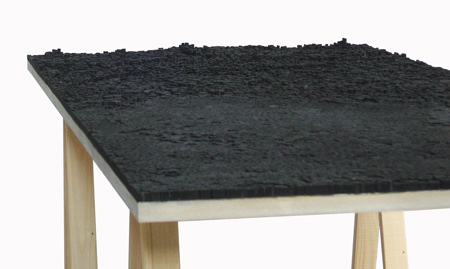
An area of the table's surface is leveled while the rest is raised and bumpy. "That is the place for a person to sit down and enjoy the view on this hypnotic structure," says Weiss.
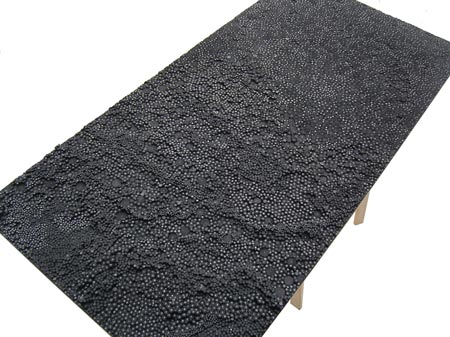
Weiss claims that the technique is derived from a traditional Dutch technique called oyster veneer, where twigs are sliced into rings and assembled into decorative patterns.
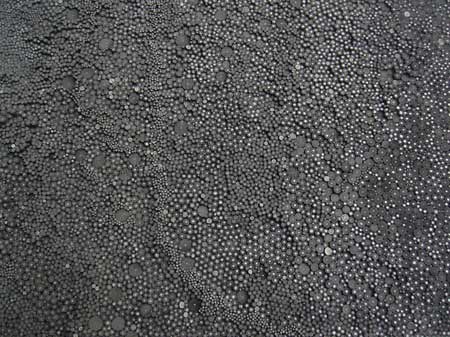
Here's some text from Weiss:
--
Title: ‘Table With A View’
Of the ‘Refined’-Series
Year: 2008
Material: Charcoal on MDF, wood
Technique: Oyster Veneer Technique
Dimensions: 60 x 120 x h70 cm
‘Table With A View’ is the first piece of the new ‘Refined’–series by Anke Weiss. The goal of the series is to produce valuable objects by refinement. Through the process of refinement value is added to previously non-precious materials. This can be achieved through the use of another, more precious material or through the manner material is applied or treated.
‘Table With A View’ consists of a MDF plate covered with charcoal that is treated with a fixative. In this work it is obvious that the charcoal as a material only does not refine the MDF by itself; it is the way the thousands of pieces are put together that produces the effect of refinement.
The formal aesthetic of an organic, molecular/cell-based structure is used to create a pattern that is recognizable from Weiss’ earlier work. The work is done by hand, in a meticulous effort, taking its time to evolve over time.
The virtuous and wavelike surface gained by the process is three-dimensional. On one side the table surface is flattened. That is the place for a person to sit down and enjoy the view on this hypnotic structure.
The pattern is achieved by using a technique based on the traditional oyster veneer technique. Oyster veneer is produced by transversed slicing / sawing of wooden twigs or stems. The slices of this sawn veneer show the year rings of the wood. By placing these thin stems in an orderly way, intriguing patterns can be formed.
This technique has a Dutch origin and has been applied often in the mid 17th century on cabinets and drawers. The used woods for this purpose are normally olive or nut.
The end result of this process is an intricately patterned and interesting veneer that is extremely beautiful to look at, even before polishing.
Working with oysters today is rare.
'Table With A View’ is shown at
EAT DRINK DESIGN @ DUTCH DESIGN WEEK
EDD INSIDE @ Catharinaplein 27
Eindhoven 18 - 26 October 2008
EAT DRINK DESIGN CONCEPT
Moon/en/co (Annemoon Geurts en Koen Rijnbeek)
and Sot-l'y-laisse (Edwin Severijn).
More Dezeen stories about Anke Weiss:
.
